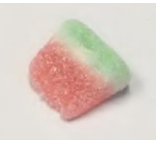The US Court of Appeals for the Fourth Circuit reversed and remanded a district court’s ruling, holding that the Lanham Act does not foreclose an Administrative Procedure Act (APA) action for judicial review of the US Patent & Trademark Office’s (PTO) compliance with statutes and regulations governing trademark registration renewal. Bacardi & Co. Ltd. v. USPTO, Case No. 22-1659 (4th Cir. June 13, 2024) (Rushing, Richardson, Motz, JJ.)
The Arechabala family exported rum to the United States using the registered HAVANA CLUB trademark until the Cuban government expropriated Arechabala’s assets without compensation and let the HAVANA CLUB trademark expire. Empresa Cubana Exportadora de Alimentos y Productos Varios (Cubaexport) then registered HAVANA CLUB as a trademark in the US for itself. Bacardi & Company Limited and Bacardi USA, Inc. (collectively, Bacardi) obtained an interest in the HAVANA CLUB mark from the Arechabala family, filed a US trademark application for HAVANA CLUB and petitioned the PTO to cancel Cubaexport’s registration. Upon the PTO’s denial of Bacardi’s trademark application and cancellation petition, Bacardi filed a civil action challenging these administrative rulings.
Two years later, Cubaexport was required to renew its HAVANA CLUB trademark registration under Section 8 of the Lanham Act. Because of a trade embargo, Cubaexport sought a specific license from the US Department of the Treasury’s Office of Foreign Assets Control (OFAC) to pay the renewal fee, but OFAC denied the request. OFAC’s denial resulted in the PTO denying renewal of Cubaexport’s HAVANA CLUB registration. Cubaexport petitioned OFAC and the PTO to reverse their decisions. Ten years later, once OFAC issued a special license to Cubaexport, the PTO permitted Cubaexport to renew its HAVANA CLUB trademark registration.
Bacardi sued the PTO under the APA, claiming that the PTO Director violated Section 9 of the Lanham Act and the PTO’s own regulations by purporting to renew a trademark registration 10 years after it expired. The district court ruled that the Lanham Act precluded judicial review under the APA and thereby dismissed Bacardi’s lawsuit for lack of subject matter jurisdiction. Bacardi appealed.
The Fourth Circuit reversed, finding that “[n]othing in the Lanham Act expressly precludes judicial review of the PTO’s trademark registration renewal decisions.” In fact, Section 21 of the Lanham Act specifically authorizes, rather than forecloses, parties dissatisfied with certain decisions of the Director or the Trademark Trial & Appeal Board to appeal to the US Court of Appeals for the Federal Circuit or institute a civil action in federal district court. Section 21 of the Lanham Act also does not limit proceedings under sections or statutes such as the APA, and the Lanham Act is silent as to whether a third party may seek judicial review of the PTO’s decision to grant a renewal application.
Having found nothing in the Lanham Act that expressly precludes judicial review of PTO registration renewal decisions or fairly implies congressional intent to do so, the Fourth Circuit concluded that the APA’s mechanism for judicial review remains available.
read more


 Subscribe
Subscribe



